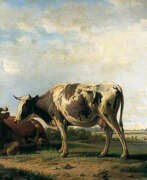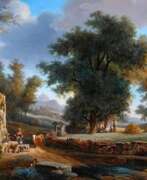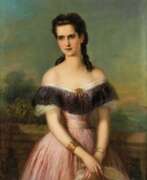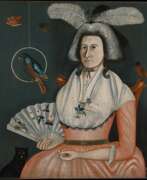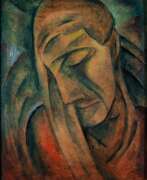Animalists 19th century


Julius Anton Adam was a German genre painter and animalist who specialised in the depiction of cats and was a member of an influential family of Munich painters.
Julius Anton Adam was a pupil of Professor Michael Echter and later Wilhelm von Dietz at the Munich Academy of Art. He later became a professor himself.


Benno Rafael Adam is a German animalist painter.
He began his fine art studies under the tutelage of his father, the balloonist painter Albrecht Adam. He masterfully depicted hunting dogs and horses, especially scenes of hunting wild animals. Benno Adam also illustrated several textbooks and manuals on livestock breeding.
Benno's son Emil Adam also became an artist.


Henry Thomas Alcken was an English painter and engraver chiefly known as a caricaturist and illustrator of sporting subjects and coaching scenes. His most prolific period of painting and drawing occurred between 1816 and 1831.


Richard Ansdell was a British painter of animals and genre scenes.
Ansdell's subject matter was compared to that of Edwin Landseer, though critical opinion was that, though popular, his works lacked the latter's emotional impact. His reputation was as a hardworking but occasionally over-proud artist; for instance, he received no royal commissions after refusing to paint Queen Victoria's dogs unless they were brought to his studio.


Berthe Constance Ursule Art was a Belgian still life painter. She was trained by Alfred Stevens and advised by Franz Binjé. Berthe Art exhibited her work at the Palace of Fine Arts and The Woman's Building at the 1893 World's Columbian Exposition in Chicago, Illinois. She became a member of the Brussels-based club called Cercle des Femmes Peintres which was active 1888–1893. They were the Belgian equivalent of the French Union des Femmes Peintres et Sculpteurs. She began a Brussels gallery in 1911 together with some friends from the (by then defunct) Circle of Women Painters. The gallery was called the Galerie Lyceum.




Carl Daniel David Friedrich Bach was a German artist of the late eighteenth and early nineteenth centuries, the Baroque period. He is known as a painter, graphic artist and printmaker.
Bach worked in the historical genre, was a portraitist, animalist, created canvases on allegorical subjects in the spirit of his era. In his works he combined elements of baroque and classicism. The artist often worked in the etching needle technique.


James Barenger is a British animal artist and illustrator.
He was born James Barenger Sr. James Barenger was a metal chaser and naturalist painter. Barenger specialized in depicting horses, dogs, and other animals, as well as noblemen's hunting scenes, which were consistently successful in the 19th century.
Barenger's patrons included the Duke of Grafton, the Marquis of Londonderry and the Earl of Derby. The artist produced entire series of prints depicting hunting, shooting, bullfighting and horse racing, which were published in sporting publications.
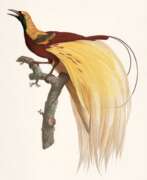

Jacques Barraband was a French zoological and botanical illustrator, renowned for his lifelike renderings of tropical birds. His pictures were based on mounted specimens and his illustration was considered the most accurate ones made during the early 1800s.


William Holbrook Beard was an American artistic painter who is known best for his satirical paintings of beasts performing human-like activities.
Beard was a prolific artist. His humorous treatment of bears, cats, dogs, horses and monkeys, generally with some human occupation and expression, usually satirical, gave him a great vogue at one time, and his pictures were much reproduced.




Rosa Bonheur, born Marie-Rosalie Bonheur, was a French artist known best as a painter of animals (animalière). She also made sculpture in a realist style. Her paintings include Ploughing in the Nivernais, first exhibited at the Paris Salon of 1848, and now in the Musée d'Orsay in Paris, and The Horse Fair, which was exhibited at the Salon of 1853 (finished in 1855) and is now in the Metropolitan Museum of Art in New York City. Bonheur was widely considered to be the most famous female painter of the nineteenth century.


Emma Minnie Boyd, born Emma Minnie Beckett, was an Australian artist. She exhibited publicly between 1874 and 1932 with the Victorian Society of Artists, the International Centenary Exhibition of 1888 (Melbourne), the Royal Academy of Arts (London) and in a joint exhibition with her husband at Como House in Melbourne in 1902.
Emma Minnie Boyd had a talent for watercolour landscapes, although she painted in both watercolour and oil, depicting interiors, figures, portraits, still lifes and floral studies. She is part of the Boyd artistic dynasty that began with Emma and her husband Arthur.


Anton Braith was a German painter of the second half of the nineteenth and early twentieth centuries. He is known as a painter, landscape painter and animalist.
Anton Braith was active for a total of 53 years. His creative path consists of four periods. At first, the artist imitated Dutch painting, then specialized in portraits of animals surrounded by nature. Between 1874 and 1894 he produced his most outstanding works, characterized by vividness and drama. In his last years he focused on animal scenes in mountain meadows, gradually retiring from active artistic endeavors.
Braith was professor of painting at the Munich Academy of Painting and an honorary member of the Royal Academy of Fine Arts Munich.
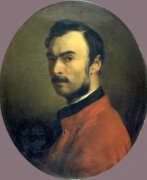

Jacques Raymond Brascassat was a French painter known for his landscapes and animal paintings.
Jacques Raymond Brascassat was a member of the Académie des Beaux-Arts since 1846. Among his pupils was Charles-François Daubigny.


Alfred-Arthur Brunel de Neuville was a French painter known mainly for paintings of still life and animals, especially cats. His works are in museums at Béziers, Brest, Chateau Thierry, and Louviers.


Arthur Brusenbauch was an Austrian painter. Arthur Brusenbauch learned from Johann Kautsky and then worked as a stage decorator himself. He studied in Vienna at the Staatsgewerbeschule and the Academy of Fine Arts, interrupted by military service and imprisonment. In 1920 he became a member of the Vienna Secession, and in 1939 he moved to the Künstlerhaus. In 1928 he had represented Austria in the art competitions of the 1928 Olympic Games. From 1937 to 1941 he participated in all major German art exhibitions in Munich with seven oil paintings. There, in 1939, Hitler acquired the picture of Melk an der Donau in festive decorations. Brusenbauch, who is attributed to late impressionism, dealt with fresco painting and graphics.


Anton Burger was a German painter, draftsman and etcher. He was a prolific and versatile painter, producing works in almost every genre. His paintings sold very well and, in the area around Kronberg, it was considered a sign of good taste to have a "Burger" in one's home. In 1861, he and Jakob Fürchtegott Dielmann (an old friend from his days at the Städelschule) founded the Kronberg Artists' Colony, where he remained until his death. He was highly regarded and came to be known as the "King of Kronberg".






Peter Jakob Freiherr Clodt von Jürgensburg (Russian: Пётр Карлович Клодт фон Юргенсбург) was a Russian sculptor of Baltic German descent, renowned for his significant contributions to Russian monumental art during the reign of Nicholas I. Born on June 5, 1805, in Saint Petersburg, Clodt initially embarked on a military career before pursuing his artistic ambitions. He studied at the Imperial Academy of Arts in Saint Petersburg, where he honed his skills in horse sculpture, eventually earning acclaim from the Emperor himself.
Clodt's most celebrated works include the "Horse Tamers" sculptures on the Anichkov Bridge, unveiled in 1851, and the first monument to a poet in the Russian Empire, the statue of Ivan Krylov in the Summer Garden (1848-1855). His mastery in equestrian statues is evident in the Monument to Nicholas I on Saint Isaac's Square, notable for its technical innovation as the world's first equestrian statue supported solely by the horse's two rear legs. This piece, installed between 1856 and 1859, remains a historic achievement in sculptural engineering.
Clodt's works are celebrated for their dynamic representation and precision in detail, characteristics that have kept his legacy alive in the realms of Russian and European art. His sculptures can be viewed in various prominent locations across Saint Petersburg, serving as cultural landmarks that attract both art aficionados and general tourists.
For those interested in the history of Russian sculpture and the works of Peter Jakob Freiherr Clodt von Jürgensburg, staying updated on exhibitions and auctions can provide unique insights and opportunities. Sign up for updates on new product sales and auction events related to this master sculptor to ensure you don't miss out on valuable collectibles and exhibits.


Marie Collart-Henrotin was a Belgian artist who mainly painted landscapes and animals. Collart was primarily self-taught as an artist. She became a founding member of the Société Libre des Beaux-Arts in 1868. In 1870, she won a gold medal at the Salon des artistes français. She became the first women to be named a Chevalier in the Belgian Order of Leopold in 1880. Collart exhibited her work at the Palace of Fine Arts and The Woman's Building at the 1893 World's Columbian Exposition in Chicago, Illinois. Her work is included in the collections of the Royal Museum of Fine Arts Antwerp and Royal Museums of Fine Arts of Belgium.


Thomas Sidney Cooper was an English painter. He studied in London at the British Museum and the Royal Academy of Arts.
Thomas Sidney Cooper painted idyllic landscapes and animals in the spirit of the old Flemish masters.
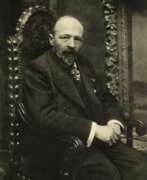

Franciscus Eduardus Maria (Franz) Courtens (1854–1943) was a Belgian painter. He was a leading figure in the Dendermonde School, famous for his paintings of nature and landscapes. Courtens was professor at the Royal Academy of Fine Arts (NHISKA) in Antwerp from 1904 till 1924. He was a personal friend of Leopold II, who gave him the privilege of free access to the royal Parc of Laeken. Some of his paintings stil remain in the Royal collection.




Alexander Joseph Daiwaille was a Dutch portrait painter. He specialized in painting portraits, like his father, although he later in life painted landscapes. He traveled and worked all around the Netherlands and Germany. Daiwaille then moved and settled in Brussels where he lived until his death in 1888.


Jacques de Lalaing was an Anglo-Belgian painter and sculptor, specializing in animals. Lalaing was raised in England until 1875, when he moved to Brussels. He trained as an artist under Jean-François Portaels and Louis Gallait at the Académie Royale des Beaux-Arts in Brussels. With the encouragement of Thomas Vinçotte and Jef Lambeaux, Lalaing began to sculpt in 1884. As a painter he continued to work in a realistic, naturalistic style, as a portrait painter and producing historical scenes. As a sculptor he produced allegorical bronzes and memorial art. Along with his fellow animalier sculptors Léon Mignon and Antoine-Félix Bouré Lalaing established a distinctively Belgian tradition of animal art, to which the flourishing Antwerp Zoo contributed inspiration. In 1896 Lalaing became a member of the Royal Academy where he had studied, and from 1904 through 1913 he served as its director. His works are represented in the collections of museums in Antwerp, Bruges, Brussels, Ghent and Tournai.


Pieter Cornelis de Moor, a Dutch artist, stands out as a versatile and innovative figure in the art world. His education at the Academy of Visual Arts in Rotterdam and the Drawing Academy in Antwerp laid the foundation for a career marked by diversity and creativity. De Moor's achievements, including a silver medal in the Prix de Rome in 1887, underline his early recognition and the promise of his artistic journey.
De Moor's artistry was not confined to a single medium; he was adept in drawing, etching, painting, watercolor, producing lithographs, and working as an illustrator. His artworks, ranging from "Dancing Women" to "Poultry on a Yard" and "An Elegant Lady Feeding Peacocks," showcase his broad thematic interests and technical skills. Notably, his works are held in prestigious collections, including the Rijksmuseum and the Dordrechts Museum.
The artist's life was rich with experiences, having worked across Europe and eventually settling in the United States. His legacy, punctuated by exhibitions in museums such as Museum Boijmans Van Beuningen and the Drents Museum, continues to captivate art enthusiasts and collectors.
For collectors and art experts, delving into the works of Pieter Cornelis de Moor offers a unique glimpse into the evolution of Dutch art. His contributions, particularly in the realm of Symbolism, highlight an era of artistic exploration and innovation.
Stay informed about new product sales and auction events related to Pieter Cornelis de Moor by signing up for updates. This subscription is your gateway to the latest acquisitions and opportunities in the world of this distinguished artist.






Edmond De Schampheleer was a Belgian landscape painter and engraver. After completing his studies with Eugène-François de Block in Antwerp, he set himself up as a landscape painter; taking a realistic approach, derived from Théodore Fourmois and the French artists of the Barbizon School. He also combined plein aire techniques with large-scale painting in his studio. His style increasingly came to resemble that of the 17th century Dutch artists.




Johannes Christian Deiker is a German painter. He is mainly known for his hunting motifs. His father Christian Friedrich Deiker was a portrait painter and his younger brother Carl Friedrich an animalist.


Carl Friedrich Deiker was a German animal painter.
He depicted with particular interest the wild animals of Germany - deer and wild boar; battles between male deer, broods of wild piglets escaping from hunters. Some of his canvases are devoted to birds of prey - falcons, hawks as well as grouse, grouse; the life of foxes, hares and other animals and birds. The painter also illustrated animal scenes in art magazines and hunting literature.


Jean-Joseph Delvin was a Belgian painter who specialized in scenes with animals (primarily horses). He attended the Royal Academy of Fine Arts in Ghent, where he studied under Théodore-Joseph Canneel, and worked in the studios of Jean Portaels in Brussels. Later, he undertook study trips to France and Spain. For many years, he shared a small workshop in a garden shed with Gustave Den Duyts. In 1883, he was invited to join the secessionist group Les XX, but he resigned only a few years later in 1886. He was also a member of La Libre Esthétique and Kunst van Heden (Art for Today) in Antwerp. At about that time, he began teaching at the Academy in Ghent and later became its Director (1902–1913). Among his many well-known students there were Albert Baertsoen, Gustave De Smet, Frans Masereel, George Minne and Frits Van den Berghe.


Jean-Baptiste Édouard Detaille was a French academic painter and military artist noted for his precision and realistic detail. He was regarded as the "semi-official artist of the French army". Detaille made his debut as an artist at the Salon—the official art exhibition of the Académie des Beaux-Arts—of 1867 with a painting of Meissonier's studio. At the Salon of 1868, he exhibited his first military painting, The Drummers Halt, which was based solely on his imagination of the French Revolution. Detaille enlisted in the 8th Mobile Bataillon of the French Army when the Franco-Prussian War broke out in 1870; by November he was seeing and experiencing the realities of war. This experience allowed him to produce his famed portraits of soldiers and historically accurate depictions of military manoeuvres, uniforms, and military life in general. He eventually became the official painter of the battles. He published a book called L'Armée Française in 1885, which contains over 300 line drawings and 20 color reproductions of his works.


Marguérite Dielman was a Belgian still life painter. She was a student of Jean Portaels and Ernest Blanc-Garin and she mainly painted still lifes and animals. In 1888 she was co-founder of the «Cercle des Femmes Peintres». They organized four exhibitions (1888, 1890, 1891, 1893) after which the group may have fallen apart. Her oil painting «Summer Flowers in a Vase» was auctioned in June 1999 for £1,840 at Christie's, London.


Edwin James Douglas was a British animal painter.
Edwin was the son of the famous portrait painter James Douglas, studied at the Royal Scottish Academy schools and exhibited his first works at the Royal Scottish Academy at the age of only 17. Edwin Douglas painted hunting scenes, dogs and horses, which attracted many famous patrons, including Sir Charles Tennant and Queen Victoria. She even purchased a painting of setters as a birthday present for King Edward VII.
Douglas was a very successful artist whose animal paintings, like those of his predecessor Landseer, resonated with Victorian collectors. He was best at dogs and horses, but he also painted portraits and genre pictures. Between 1869 and 1900 he exhibited at the Royal Academy, forty-one works in all, at the Royal Scottish Academy and other venues in London and the provinces. In addition to painting, Douglas had a passion for cattle breeding and was elected an honorary life member of the Jersey Cattle Society of England.




Pierre Louis Dubourcq was a Dutch landscape painter, lithographer and etcher. He was a student of Jan van Ravenswaay in Hilversum in 1834 and of Andreas Schelfhout in The Hague in 1835. He mainly painted mountain and forest landscapes and he etched, drew, created watercolors and lithographs. From 1834 to 1858 he took part in the exhibitions in Amsterdam and The Hague. Prince Alexander of Orange-Nassau commissioned him to do some watercolors of the falconry hunts at Het Loo Castle. He was a member of Arti et Amicitiae, the Koninklijke Academie van Beeldende Kunsten and the Natura Artis Magistra Society.


William Herbert "Buck" Dunton was an American artist and illustrator born in 1878 and passed away in 1936. He was one of the founding members of the Taos Society of Artists, a collective of artists in New Mexico that was considered one of the most influential art groups in the United States in the early 20th century. Dunton was known for his works dedicated to the life and culture of Native Americans, as well as many Western landscapes. In his paintings, he conveyed the beauty and power of nature, as well as the life of Native Americans in their natural environment. Buck Dunton was a recognized master of his craft, and his works remain popular and sought after in the world of art.


Robert Eberle was a German painter. He was educated in Konstanz, where he was a pupil of the Swiss landscape and animal painter John Jacob Biedermann. In 1830 he moved to Munich and continued his education with Karl Theodor von Piloti and studied the works of Röysdal and Dujardin.
Eberle was known as a realist painter and quickly gained recognition for his genre scenes and depictions of animals, especially sheep, dogs and poultry. His son, Adolphe Eberle, was also an animal painter.


Adolf Eberle was a German painter of the second half of the nineteenth and early twentieth centuries. He is known as a genre painter and animalist.
Adolf Eberle specialized in depicting rural life, especially Bavarian and Tyrolean farmers and hunters. Early in his career, he was interested in historical subjects, but quickly returned to depicting peasant and animal life. His painting "The Sale of the Last Cow" brought him his first great success in 1861, and in 1879 at the Munich exhibition his work "The First Deer" was highly praised by the jury.


Otto Eerelman was a Dutch painter; best known for his depictions of dogs and horses. He was also a court painter and did several portraits of Wilhelmina, as Princess and Queen. His best known painting, "De paardenkeuring op de Grote Markt op de 28ste augustus", depicts an annual celebration (featuring horses) held to commemorate the lifting of the Siege of Groningen.


Johannes Hinderikus Egenberger was a Dutch painter, photographer and art educator. From 1840 to 1848, he studied at the Royal Academy of Fine Arts in Amsterdam with Jan Willem Pieneman. During these years, he focused on painting scenes from Dutch history. In 1854, he collaborated with Barend Wijnveld to produce a massive canvas depicting the heroic defense of Haarlem led by Kenau Hasselaer in 1573. Later, he would turn to landscapes, domestic scenes and portraits, including a series for the Rijksuniversiteit. In 1857, he was appointed Headmaster of the Academie Minerva in Groningen. In addition to his work there, he became a photographer and, in 1864, opened the first photography studio in Groningen. The following year, he resigned his position as Headmaster to devote himself entirely to photography.


Max Feldbauer was a German painter, associated with the Munich Secession. He is primarily known for rural, Bavarian scenes. From 1901 to 1915, he taught at the Academy of the Münchner Künstlerinnenverein (women artists' association). In 1908, he joined the Munich Secession. He also ran his own painting school, in Mitterndorf, near the Dachau art colony, from 1912 to 1922. He left the Secession in 1913; becoming one of the founders of the New Secession, and served as a board member. In addition to all of these activities, he provided illustrations for Die Jugend (Youth), a weekly arts magazine.


John E. Ferneley was an English artist who specialised in depicting sport horses and hunting scenes. Although his rendition of horses was stylised, he is regarded as one of the great British equine artists, second perhaps only to George Stubbs.


Otto Hermann Fikentscher was a German painter, etcher, lithographer, and sculptor born in 1862 and died in 1945. He studied at the Kunstgewerbeschule de Dresde and the Academy of Fine Arts in Munich. Fikentscher's main focus was on the representation of animals, often in picturesque surroundings, in oil paintings, watercolors, lithographs, or engravings. He exhibited his works several times at major art exhibitions in Berlin, Düsseldorf, Munich, and Karlsruhe.


Otto Clemens Fikentscher the Elder was a German painter, draughtsman and illustrator of the Düsseldorf School. Although it is unclear whether he is related to the artist Otto Fikentscher, who was married to Jenny Fikentscher, Otto Fikentscher (the Elder) studied at the Düsseldorf Art Academy and specialised in historical painting and the depiction of horses in battle scenes. He was a member of the artists' association Malkasten and served as a war correspondent during conflicts such as the German-Danish War and the Franco-Prussian War. Fikentscher's works were reproduced in popular magazines and showed his lively and dynamic style.


Rudolf Ferdinandovich Frentz (Russian: Рудольф Фердинандович Френц) was a Russian artist known for his paintings and graphic works. Born in 1831, he received his artistic education at the Berlin Academy of Arts. Frentz specialized in genre scenes and antimalistics. He was also a court painter, highlighting his high status and recognition of his skill.
One of Frentz's artistic features was his attention to detail and ability to depict movement. His paintings often convey the drama and dynamism of events.
Frentz is also known as the father of artist Rudolf Rudolfovich Frentz, who followed in his father's footsteps and became a renowned painter. Rudolf Ferdinandovich's legacy significantly influenced his son's work, passing on not only technique and skill but also a deep understanding of art.
As a court painter, Frentz created works that adorned palaces and imperial residences. His works can be seen in Russian museums and galleries, such as the Russian Museum and the Tretyakov Gallery. They continue to inspire a new generation of artists and art enthusiasts.
For updates on new sales and auction events related to Rudolf Ferdinandovich Frentz, sign up for our updates.


Wilhelm Friedrich Frey was a German painter of the second half of the 19th and early 20th centuries. He is known as a painter of the Munich School.
Frey became famous as an animalist and landscape painter who also showed himself in portraits and genre drawings. His style evolved from Munich School techniques to academic realism with subtle color. In the late nineteenth century he turned to the coastal landscapes of northern Germany in his work, exploring color and air movement through the dramatic play of wind and clouds. In his later years, Frey became fascinated with landscapes of Lake Constance, the Rhine, and the Alps.


Conrad Freyberg was a German artist of the second half of the nineteenth and early twentieth centuries. He is known as a painter and sculptor.
Freyberg specialized in equestrian portraits and group portraits of horsemen, combining realistic likeness with delicate rendering. Inspired by the wars of 1866 and 1870-1871, the artist created battle paintings, including The Battle of Sadov and The Battle of Skalica. He later became a portrait painter and also worked in the genres of historical painting, animalistic painting and sports scenes. For his achievements, he received the title of court painter. The master was one of the creators of the bronze monument to Prince Albrecht of Prussia in Berlin's Charlottenburg district in 1901.


Ernst Frick was a Swiss painter. As far as can be ascertained, Frick began painting around 1917. He was taught by Arthur Segal in Ascona. Frick painted in charcoal, oil and watercolour. His preference was for nature and animals, but also working people. He was influenced by the artist group Der Blaue Reiter. In 1924 he was a founding member of the artists' association Der Grosse Bär. After the dissolution of the group Der Grosse Bär in 1941, he remained artistically active and joined newly formed Asconese artist groups.
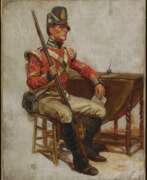

Emile Edwin Ganz is a Swiss-Belgian painter, specializing in the representation of horses and military scenes. In his early days, Ganz mainly drew military scenes, a genre that only a few 19th-century artists mastered. His masterpiece in the genre is The Attack of Scherpenheuvel, a report on the maneuvers of the grenadiers in 1894. In 1901 he entered the service of Princess Clémentine as a painter; he held this position until 1903. In 1903, he also brushed some of King Leopold II's horses. From that moment, he was no longer interested only in the horse itself, but in the regional draft horse, as well as in the people and the rural world: newspaper sellers, old horses in a depot, the harvest in the fields , beet harvest, landscape. Many of his designs for military uniforms were printed in color lithograph.


Henry Garland was a British painter. He was primarily known for his landscape paintings, which often depicted rural scenes of England, Scotland and Wales.
Garland's work is characterised by a romanticised view of the countryside with rolling hills, livestock and tranquil streams. The painter was particularly adept at capturing the atmospheric effects of light and weather in his paintings, and his use of colour was subtle and evocative.
Today Henry Garland is regarded as one of the leading British landscape painters of his generation, and his work is still highly regarded for its sensitivity to the natural world and its depiction of a rapidly changing society.


Friedrich Otto Gebler was a German animal painter.
Gebler studied at the academies in Dresden and Munich and specialized in rural themes and animalistic painting. The main character in Goebler's paintings is sheep, the life of which he studied thoroughly. The sheep graze, rest, worry, there are even expressive portraits of sheep. Contemporary critics have recognized him as the best artist in this subject.


Ernst Moritz Geyger was a German artist known for his work in sculpture, painting and engraving. His work is included in the collections of the Los Angeles County Museum of Art, the Carnegie Museum of Art and the Fine Arts Museums of San Francisco.


Roger Godchaux was a French sculptor, painter, and draftsman, recognized for his exceptional portrayal of animal figures. Born on December 21, 1878, in Vendôme, France, Godchaux's journey in the arts was marked by innovation and a profound connection to the animal form, particularly felines and elephants. His academic training at the Ecole des Beaux-Arts under the tutelage of Jules Adler and Jean-Léon Gérôme honed his skills, leading him to exhibit annually at the Salon des Artistes Français from 1905.
Godchaux's works are characterized by their dynamic force and volume, a testament to his rigorous observation and detailed drawings. His models, often sourced from zoos, allowed him to capture the dense muscularity of young felines and large animals, creating sculptures that are both lifelike and expressive. His admiration for Antoine-Louis Barye is evident in the vitality and precision of his animal sculptures.
For collectors and connoisseurs of fine animalier sculpture, Roger Godchaux's works remain a pinnacle of the genre. His sculptures, paintings, and designs can be found in galleries and private collections, celebrated for their timeless appeal and artistic excellence. To explore Godchaux's captivating world of animal art, sign up for our updates and discover the depth of his sculptural legacy.


Franz Xafer Gräßel was a German animal and landscape painter.
Gräßel studied painting at the Karlsruhe Academy and at the Munich Academy, where he became a professor in 1911. Initially his favorite subject was rural landscapes, but from 1894 he painted mainly ducks and geese and achieved a high level of skill in their depiction. Gräßel even earned the nickname "duck painter".
In 1932 Gräßel joined the NSDAP, and in 1938, 1939 and 1940 was represented by four paintings at the Great Exhibition of German Art in Munich. Adolf Hitler liked them so much that he purchased them all. The artist's paintings are now in important galleries and collections in Germany.




Harry Hall was an English equestrian painter, whose works were in demand by horse owners. His output was prolific and he was the foremost racehorse portraitist of his time: his style has been described as being "strikingly modern... when compared with many of his contemporaries". He also produced other types of portraits and shooting scenes.


Charles Hamilton, active between 1831 and 1867, was a talented Orientalist painter. Although exact details of his life and work are unavailable, his art profile leaves a mark on art history.
It is known that Hamilton was a recognised master in his field and worked in a variety of genres. His art attracts the attention of collectors and experts, and his works are still highly valued at auctions.
For those who are interested in Orientalist art and want to know more about Charles Hamilton's works, his paintings are of particular interest. Each of his works is a reflection of the era and the artist's individual style, making them significant in the context of art history.
We invite anyone interested in unique artworks and cultural relics to subscribe to our updates. We will keep you informed of new sales and auctions related to the works of Charles Hamilton.


Sigmund Walter Hampel, born in Vienna in 1867 and passed away in 1949 at Nußdorf am Attersee, was an esteemed Austrian painter and draughtsman. The son of a glass painter, Hampel honed his artistic skills and knowledge of design, material, and technique in his father's workshop. His formal education at the Vienna Academy of Art under notable figures like August Eisenmenger and Heinrich von Angeli further refined his abilities, especially in delicate coloring and technical proficiency.
A significant period of Hampel's career was his membership in the Hagenbund, a Vienna-based artists' association, from 1900 to 1911. This association was known for its avant-garde approach and played a critical role in shaping modern art in Austria. Hampel's works are recognized for their diverse range of subjects and styles, including figurative works, still life, and portraiture.
Some of Hampel's notable works include "Interieur" (1903), "Zimmer In Einem Alten Forsthaus" (1905), "Spanische Tänzerin (Porträt der Mlle E.)" (1904), "Blumenstillleben" (1910), and "Der Zwerg und das Weib" (1902-1903). These artworks exemplify his versatile approach to art, capturing a range of emotions and narratives through his distinct artistic style.
Hampel's contributions to the art world, particularly in Austria, are significant. His works continue to be appreciated by art enthusiasts, collectors, and experts in art and antiques for their aesthetic value and historical significance.
To stay updated on the latest information, sales, and auction events related to Sigmund Walter Hampel, sign up for our newsletter. This subscription will provide regular updates exclusively about new opportunities related to Hampel's works, ensuring you don't miss out on any significant developments in this area.


Ludwig Hartmann was a German animal painter.
Hartmann studied at the Academy of Fine Arts in Munich and was a member of the prestigious Munich School of Artists, which flourished during his lifetime, he was awarded medals in Vienna in 1869 and 1872.
The artist's greatest success came from his works with horses, painted in bold colors. But Hartmann specialized in depicting simple, working horses, most often at rest. In his soulful paintings, horses tired after hard work enjoy peace - in the stables or at a watering hole.


Michael Angelo Hayes was an Irish animal and battle painter.
Hayes became best known for large-scale war scenes such as The Lancers Breaking the Square at Aliwal (1846) and The Attack of the Light Dragoons at the Battle of Muddy (1847), where he was able to convey his fascination with depicting the horse in motion.
Hayes spent many years studying with scientific pedantry the movements of the horse in a gallop and eventually published a pamphlet. His work in this area brought significant changes to the technique of depicting horses in painting, which was the subject of much controversy in the mid-nineteenth century. Hayes's innovation made it possible to convey a sense of movement and speed on canvas.
















































